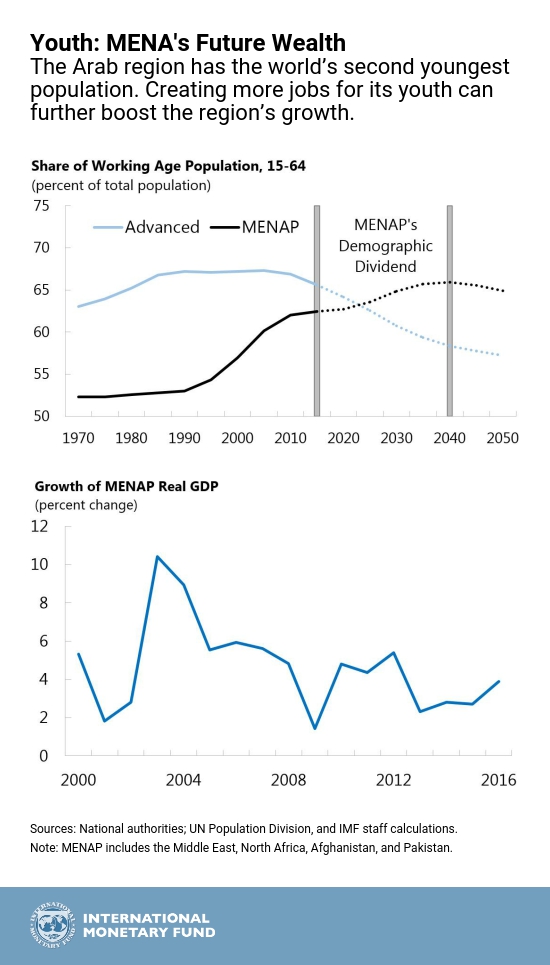Youth: MENA's Future Wealth
The Arab region, defined as the Middle East, North Africa and Pakistan (MENAP) has the second youngest population in the world, after Sub-Saharan Africa. More than 60 percent of its population is under the age of 30.
Yet, despite the region’s high level of educational attainment, it has some of the world’s highest rates of youth unemployment. Youth unemployment is 25 percent on average and reaches above 30 percent in ten regional countries. More than 35 percent of Arab Youth consider youth unemployment as the biggest obstacle currently facing the Middle East, and close to 60 percent think that connections – or wasta – are critical to a person’s success in finding a job.
Youth unemployment is a huge waste of the region’s precious resources. Indeed, whereas oil may have defined the region’s wealth in the past, its youth will define its wealth in the future.
More than five million new workers will join the labor force each year in the next five years. Finding jobs for these millions is a key challenge for the region. Yet the improved global outlook provides a window of opportunity to advance reforms for job creation. By implementing the right set of policies that facilitate private sector-led growth, reduce corruption and red tape, and provide social support for disadvantaged groups, the region can generate higher, more inclusive, and more job-rich growth.
IMF staff estimates suggest that if employment growth could be increased by 0.5 percentage points per year until 2030, economic growth could rise to more than 5 percent per year – from its historic level of about 3.9 percent. The increase in growth could be even higher – 5.9 percent per year – for oil exporting countries in the region.
Some countries have launched successful initiatives at job creation. In Morocco, for example, government initiatives helped develop and promote automotive clusters. Located in the Casablanca and Tangier free zones the cluster now produces 167,000 vehicles, generates more than US$3 billion in exports, and employs more than 85,000 people. It also has positive effects on the surrounding economy because more than 40 percent of car parts are sourced from local suppliers.
Morocco’s example shows how trade and involvement in global value chains across the region can be an important engine for job creation. Still, such initiatives need to scaled up and countries need to do a lot more to reap the dividends from its youth.
To find out more about challenges and solutions to inclusive growth in the Arab region, join us here.








